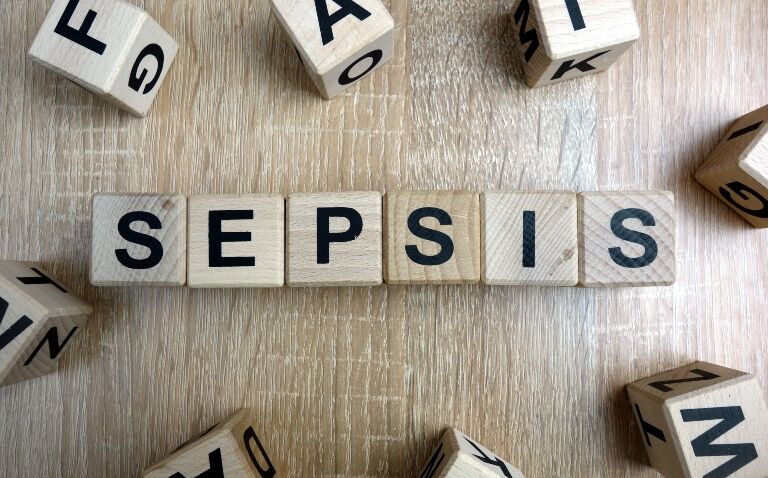Two of the four internationally recommended sepsis screening tools used by emergency medical services (EMS) are inadequate for recognising the condition, according to a new study presented at the European Society of Emergency Medicine (EUSEM)‘s recent congress.
The study also highlighted that both EMS and emergency physicians should be more vigilant in documenting a suspicion of sepsis so that further clinical patient assessment and evaluation can take place. This could help the condition to be diagnosed and treated earlier, which could help to save lives and maintain patients‘ quality of life.
Researchers from the Charité – Universitätsmedizin Berlin and the universities of Magdeburg and Jena in Germany, aimed to assess which of four screening tools recommended in the Surviving Sepsis Campaign guidelines was best for emergency medical services (EMS) to predict the condition.
They found only the National Early Warning Score (NEWS-2) screening tool to have a reasonably accurate prediction rate for sepsis. A second tool – the quick Sequential Organ Failure Assessment (qSOFA) – had a high level of accuracy in predicting patients who did not have it.
However, the two other standard screening tools, Systemic Inflammatory Response Syndrome (SIRS) and the Modified Early Warning Score (MEWS), performed poorly in both sensitivity and specificity of sepsis detection.
Dr Wolfgang Bauer, senior physician at the Charité, said: ‘In emergency care, there are good and long-established standards for the detection and treatment of heart attacks and stroke that have improved patients’ chances of survival. Unfortunately, a lot less attention is paid to sepsis and standards to improve early sepsis recognition and survival.
‘Our study found there was a similar incidence for sepsis (1.6%) as for heart attacks (2.6%) and stroke (2.7%) in cases seen by emergency medical services. However, in terms of both percentages and absolute numbers, more patients died from sepsis than from heart attacks or stroke.
‘Out of all cases with sepsis, 31.4% died within 30 days after being seen by emergency services, versus 13.4% and 11.8% respectively for heart attacks and stroke. These findings emphasise the need for better sepsis awareness and more frequent use of effective screening tools.‘
Sepsis screening tool performance
The retrospective cohort study linked data on 221,429 emergency care cases, with follow-up between 2016 and 2017 from 10 health insurance companies, with information from documentation by paramedics and emergency doctors. In doing so, it was possible to calculate the ability of the four tools to predict a sepsis diagnosis.
Only the NEWS-2 had a reasonably accurate prediction rate for sepsis, with it able to correctly predict 72.2% of all cases (sensitivity) and correctly identify 81.4% of negative, non-septic cases (specificity).
In contrast, the qSOFA had a much lower sensitivity (24.1%) but a high specificity (96.6%) for identifying those without sepsis.
For SIRS, the corresponding sensitivity and specificity were 30.4% and 93.8%, respectively, and for MEWS they were 46.8% and 88.4%.
In total, 24.3% of cases were predicted to have sepsis by at least one of the screening tools, and only 0.9% of cases were predicted to have the conditon by all four tools.
The predictions were confirmed or rejected during subsequent hospital investigations after contact with EMS.
Improved awareness required
Silke Piedmont, a health scientist for the Department of Emergency Medicine, Campus Benjamin Franklin at the Charité, and first author on the abstract said: ‘We found that paramedics never documented a suspicion of sepsis, and emergency services physicians rarely did so, only documenting a suspicion in 0.1% of cases. The screening tools recommended in the Surviving Sepsis Campaign guidelines differed greatly in terms of which and how many patients were identified as possibly having sepsis.’
Emphasising the need for better awareness and more frequent use of screening tools, Ms Piedmont added: ‘No screening tool provides ideal performance. NEWS-2 best supports EMS in identifying most patients with sepsis. EMS patients that are NEWS-2 positive should be flagged up as potentially having sepsis and referred for special attention and assessment by emergency doctors who are expert in sepsis. If EMS insist on using the qSOFA, they should be aware that a positive qSOFA makes sepsis likely, but also that a negative qSOFA cannot rule out sepsis conclusively.
‘A rule of thumb for EMS staff could be that NEWS-2 negative patients are the most likely not to have sepsis, and qSOFA positive patients are the most likely to have sepsis – and also that qSOFA misses many patients with sepsis.‘
The researchers hope their findings will help to inform new guidelines on the condition, which are being drawn up in some countries to give more specific recommendations for its screening. In particular, Ms Piedmont said: ‘Future sepsis guidelines should be more precise and omit recommendations for MEWS and SIRS for EMS since they were inferior in all the measures for accuracy.’
These findings could also apply to other countries, the researchers suggest, especially as previous studies performed in Canada and the UK support aspects of their results.
‘Ours is the first study comparing all four screening tools and showing the predictive usefulness of applying the screening tools to all adult patients independently of any presumptions or preliminary diagnoses by EMS,‘ said Mrs Piedmont.










